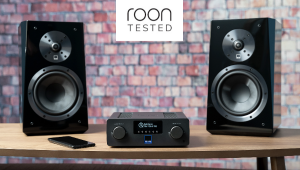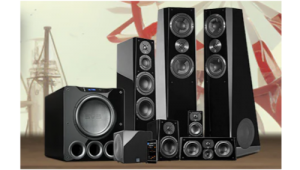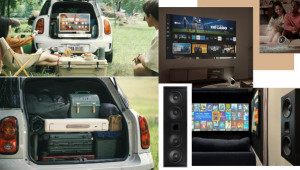Sony Showcases Digital Video Technology at Sundance
The technologies on display offer "a wide spectrum of creative and economic choices for the independent film community," according to a Sony announcement made prior to the Festival's opening. Laurence Thorpe, vice president of acquisition systems for Sony Electronics' Broadcast and Professional Company, hosted presentations of digital cinematography, including open discussions of digital-imaging issues.
Director Pierre DeLespinois, who is using Sony's widescreen HDCAM camcorder to shoot a dramatic television series, The Secret Adventures of Jules Verne, participated in Thorpe's presentations, which reviewed the digital pursuit of motion-picture film imaging and focused on new opportunities for directors. Particular emphasis was placed on the latest developments in digital imaging and especially the use of Sony's 24-frame-per-second HD production format.
Video at 24 fps is of special significance to filmmakers because of its compatibility with 24 fps film. (NTSC video runs at 30 fps, while PAL and SECAM video both run at 25 fps.) New studio work done in the past year demonstrates the potential of digital imaging, a developing technology with the potential to outperform 35 mm film and, eventually, 70 mm film, the standard by which all visual media are judged.
One of digital video's strong suits is its immunity to visual noise, or "glitches," caused by scratches on a film's surface. Films always look cleanest during the first few days of their release. Prolonged use causes scratches to build up, which makes them look "dirty." Another attractive aspect of digital tape is its ease of editing. Computer-aided manipulation of images will likely drive down production costs as fewer people become necessary to produce films. For example, crowd scenes might no longer consist of hundreds of extras, but instead could be created in the studio by "morphing" faces and costumes in generic crowd shots.
"The digital-TV era will not only have an unprecedented impact on television production," Thorpe said. "Filmmakers who have made the jump to shooting in widescreen digital video are already enjoying significant creative and economic benefits. In addition, they are 'future-proofing' their work, which will pay dividends well into the next century."
"We've been watching the digital video industry closely for several years and believe the technology has now risen to the task," said DeLespinois. "If a scene is shot correctly, the picture quality of Sony's high-definition digital video can be as good as the picture quality created in 35 mm film."
Until the emergence of high-resolution digital video, mixed results were often achieved when film and video tape were used together, as in many British television productions of the 1980s, for which outdoor scenes were filmed and indoor scenes were taped. This is no longer the case: Blending film and video is rapidly becoming a commonplace technique. "We are able to seamlessly piece together footage shot on 35 mm and footage shot on high-definition video with virtually no loss of quality," Thorpe said.
In addition, color differences between the two formats are no longer problematic, the presenters noted. According to DeLespinois, "The HDCAM cameras allow us to create a custom-made color palette directly in the camcorder, streamlining the overall color-correction process.
"Using one of the biggest green screens ever built, we are able to composite shots and create a variety of backgrounds without changing scenery," DeLespinois continued. "Using film, we would have to spend many more hours and thousands of dollars to achieve the same effect. We are also able to expose subjects with light and let the black go wherever it wants---later, we can quickly and easily pull it out. Layering, slow-motion, and identifying frames are also performed quicker and easier using the HDCAM format."
According to Ian Calderon, a founder of and senior consultant to the Sundance Institute, the Sundance Film Festival has welcomed Sony's recent contributions. "Sony's role as a technology contributor with Sundance has grown through the years, from the Sundance Filmmakers Lab to the New Media and Technology Center, and the technology is now in the hands of many of our filmmakers," he says. "Sundance has historically been an active supporter of the development of technology to enhance production opportunities for independent directors, and it is exciting to see so much of it come to fruition."
Sony Electronics, which enjoyed sales of $10.5 billion in the fiscal year ending March 31, 1998, is the leading manufacturer of professional video equipment. Throughout the industry, it is a widely accepted claim that up to 90% of all studio and broadcast gear is made by Sony.
























































